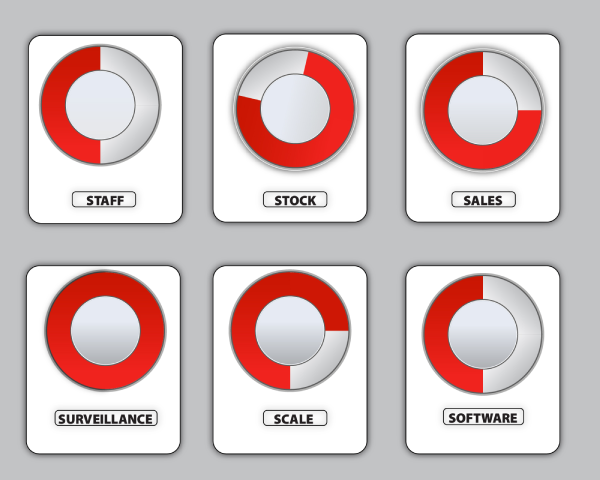What are Standard Operating Procedures?
A Standard Operating Procedure (SOP) is a step-by-step explanation of how to carry out a task. A simple example of SOP is a food recipe. It is particularly useful when you are trying to cook a new recipe. It explains the manner in which a particular food item must be prepared. A definite sequence is adhered to. The ingredients must go in at the right time in the process. If the sequence is violated or not followed as defined, the end result will not be within the scope of expectations. We may not need SOP for simple tasks but when the complexity level of a task reaches a certain point (which can vary and can also be subjective), a manual or guidance is of big help.
Why are Standard Operating Procedures Important?
SOPs reduce the need for training and supervision. Because SOPs serve as procedural roadmaps, it becomes easier for employees to follow the required steps in completing a task. When employees have such a guide map, the need for the intervention of supervisors or managers to oversee the flow of work is reduced.
SOPs increase the efficacy of business processes. SOPs provide detailed instructions on how to execute processes and operations. It defines the standards of input, output, and performance required for every activity involved in a process. Only when these benchmarks are met can a process move forward. The scope of mistakes and errors is obliterated in well-defined SOPs. This further eliminates the potential for doing a task again or process delays.
SOPs help maintain brand image by providing consistency in business operations which eventually affects customers and other value chain partners like suppliers. If internal operations are messy, they show up on external fronts. Maintaining consistency in the execution of business processes and operations is critical to functioning as a reliable entity to all stakeholders. SOPs provide this consistency by way of process standardisation.
SOPs help in better compliance with regulatory norms by pre-defining tasks and timelines along with fixing accountability. A simple example of this is a process trigger as a part of the SOP definition. This trigger lets employees know when to initiate a task and complete it. Maintaining timelines is critical when it comes to regulatory compliance.
Why use SOPs for Digital Marketing? 4 reasons are cited here
Improved visibility on SERPs
Let us understand this point with an example. Did you know that websites that load faster rank better on SERPs? Various factors that affect the loading speeds of websites include:
- Web hosting platform, hosting location
- Size of the files, volume of flash media
- Web traffic and number of HTTP requests
- Network environments
- Server location and performance
- Density of codes
- Caching
- Number of ads
So, it becomes imperative to keep a tab on these parameters on a routine basis. Having digital marketing SOPs for the same (say a checklist to visit every day) helps the IT team detect deviations and apply corrective measures and keep the loading speed within the desirable limits. The same principle applies to all other areas of digital marketing.
Higher ROI
The expenses made in digital marketing are also an investment because certain results are aimed in return. ROI in digital marketing is a function of net profit and investments made. In general, if you are able to get more returns than the costs then it is a positive sign. But here we are not talking about the formulas and metrics. We are talking about the significance of having SOPs and how it translates to higher ROI. The simple underlying essence is that if your planning and implementation in digital marketing are done in an established and systematic manner (SOPs, process-oriented), the chances of mistakes, miscalculations, and deviations in both planning and operations are reduced which in turn contributes to commercial advantages.
Consistency and accuracy in content management
In content management, SOPs help streamline operations, improve internal and external coordination, and secure timeliness, consistency, and quality in content creation and publication.
Having established digital marketing manuals for content management (from ideation to publication) helps maintain consistency in brand voice and tone.
SOPs also help in the induction of new teammates into the processes by making it easier for them with clarity in workflows, process standards, and unambiguous assignment of roles and responsibilities in the processes. Even if any digital marketing agency is hired the use of digital marketing agency SOPs is recommended for better coordination with them.
SOPs are also a great tool to detect deviations and identify the scope of improvisations in content management processes. The simple logic is that when you are following a defined path, it becomes a cakewalk to spot better ways of doing something.
Staying relevant on social media platforms
Handling a crisis situation is a perfect example of why you should have SOPs. Many times brands and businesses are stuck with unexpected or unintended events. The impact of these events is profound on social media handles. Not having any planning and execution roadmap could end up adding fuel to the situation. There are three stages of handling crises (preparation, response, and recovery). There needs to be a plan and action course (SOPs) for each of the stages. Having SOPs is a way to ensure that the actions required for pacifying and mending different situations are established in advance and are executed accordingly.
Application of SOP Digital Marketing
Although many ready-made digital marketing SOP PDFs or digital marketing SOP samples are available on the internet, every business has unique requirements and needs customised SOP solutions. To provide a sense of direction as to how SOPs can be put to use, here are some examples of applied SOPs in digital marketing. This will help to also decipher the SOP requirements unique to every business.
SOPs for Implementation of SEO principles and practices
Example – SOP for carrying out keyword analysis
SOPs for Social Media Marketing (SMM)
Example – SOP for measuring ROI on promotional campaigns
SOPs for Email Marketing
Example – SOP checklist to observe before sending an email
SOPs for SEM/paid promotional campaigns
Example – SOP for campaign planning
SOPs for Analytics & Reporting
Example – SOP checklists for what to be included or measured in different kinds of reports
SOPs for Content Management
Example – SOPs for the creation and publication of different types of content
SOPs for Website and App Management
Example – SOP for monitoring the performance of website/app
If there is a process involved, there is a scope for wrapping it in the form of SOPs. To know more about our SOP consulting services or to speak to one of our business process consultants, please drop us a message and we will reach out to you. Please visit our website to read more about our SOP design and implementation services.
Retail Healthometer
Check the health of your business? Are you ready to organize & scale ?












